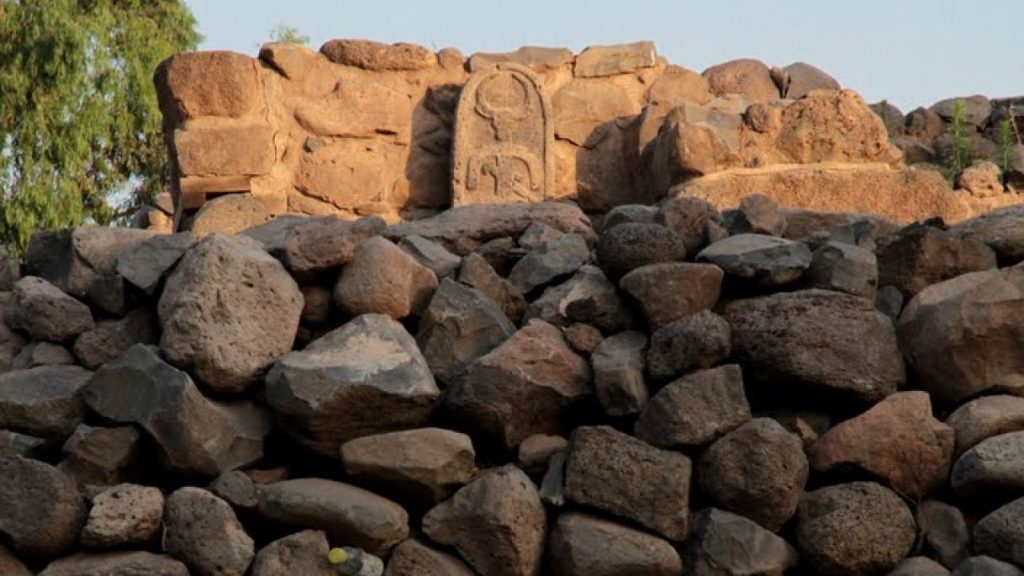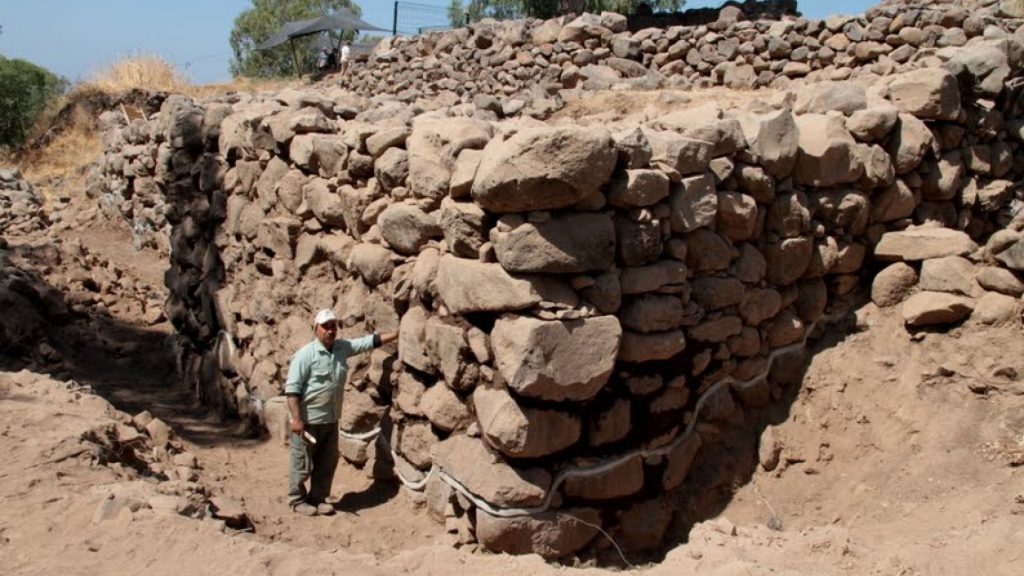“The feeling you get is that they are either terrified of something on the outside or they are protecting something really valuable on the inside.” – Dr. Kate Raphael
BETHSAIDA, ISRAEL – Archaeologists have been digging at Bethsaida for 30 years, and all they keep finding is more questions.
Bethsaida is a massive ruin of a city that’s thousands of years old, dating back to the 8th century BC. It’s on an outcrop of basalt in the arid Golan Heights, just north of the Sea of Galilee. It was the capital of the ancient Kingdom of Geshur. Not much is really known about the Geshurites.
The main question archaeologists have been trying to answer is: were they Israelites, Aramean, or both? Since archaeologists have little to no knowledge on Aramean settlements (The Kingdom of Aramea was situated in what is now modern-day Syria, and with outbreak of civil war there, excavating is no longer an option), it’s made determining Geshur’s affiliation extremely difficult.
Thirty years of excavations and work on the site of Bethsaida has yielded very little information. Archaeologists have found two distinct “cities” that existed as Bethsaida during different points in the kingdom’s timeline. The first dates to the 8th century BC, around the time the Assyrian Empire was reaching its peak, and Homer was composing his epics. The older city dates to the 10-11th centuries BC, about the time when Latins were first arriving in Italy, and Athens was a flourishing city.
The archaeologists found the first signs of the older city just three meters below the 8th century city. The find was a huge outer wall made of megalithic boulder stones. The archaeology tells a story of destruction and war. When the builders of the 8th century city were drawing up the plans, it seems they were rebuilding the destroyed 11th century city.
“We find lots of crushed mud-brick debris – evidence of destruction – so whoever rebuilt the city had to level out the destroyed city in order to build the 8th century city.” – Dr. Kate Raphael
The builders re-purposed materials from the older city to build the new. Archaeologists are still digging through the stonework to uncover the remains of the city they built on top of. So far, they’ve found a drainage tunnel, pavement, and a ramp alongside the huge wall.
A Story of War and Fear
So we know that, at the very least, the 11th century city of Bethsaida was plunged into one war or another. Yet, excavations from the 8th century city seem to indicate the city was always lying in war’s long shadow.
The city was ringed by massive monumental walls, each wall studded with guard towers as tall as three stories.
It’s really the gate of the 8th century city that’s the biggest find so far. Bethsaida boasts the largest Iron Age gate complex in the entire country of Israel. It’s the only preserved gate archaeologists have from a capital city from that point in history, and so it’s immensely valuable.
The city gate wasn’t just a place to get in and out of the city, it was a hub of culture. The gate was a huge, complex piece of architecture – the city’s first and second line of defense. It was often made up of an outer gate and an inner gate with a space in between. It was that inner space that was so important to ancient kingdoms in the region. It functioned as a hub of commerce, a meeting place, and was often used as a space for the ruler of the city to make public appearances.
It seems that, for Bethsaida, the city gate was also a religious center. Inside the courtyard of the gate, there were two high places (religious centers of worship containing altars), and five steles (standing stones). One of which was decorated with a warrior with the face of a bull.

PHOTO: haaretz.com
The Geshurites at Bethsaida had a practice of sacrificing at the gates. Archaeologists have found a three-meter deep pit at the back of the gate filled with the bones of kosher animals situated next to a horned altar. Inside one of the gate’s chambers, they found a paleo-Hebrew inscription: “Leshem” and an ankh-like symbol. Leshem is roughly translated to “dedicated to…”, and the ankh symbol is commonly identified as representing the moon god.
It seems as if the Geshurites had accepted the moon god as the god of their gate, and they had a complex set of rituals to feed him. It’s another piece in the puzzle about what was really important to the city of Bethsaida.
The walls around the 8th century city were six meters wide. It’s a size that was completely unmatched in the surrounding area.
Combine that with their important, complex rituals for appeasing the god of their gates, and a narrative begins to form. It’s a narrative of a people afraid of invasion. Either they were protecting something immensely valuable, or there was a great threat outside their walls they were trying to keep out.
Experts aren’t exactly sure what that threat might be. What we do know is that, in 732 BC, even the god of the gate and Bethsaida’s six-meter-wide walls couldn’t keep out the Assyrians. The archaeology tells us that the Assyrians poured over the walls, breached the gates, and smashed steles, pottery, and burned the city to the ground.
In days, Bethsaida was brought from mighty city to a mere fishing village. It never regained its former glory.
Perhaps the Geshurites were right to be afraid.


